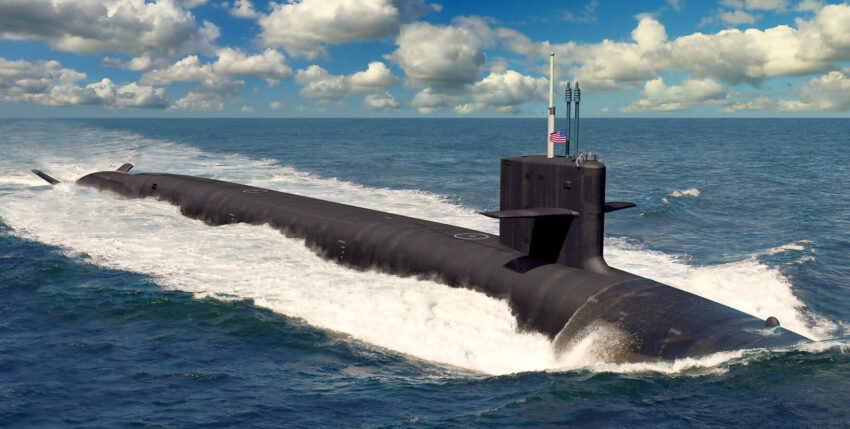Deborah G. Rosenblum, Under Secretary of State for Nuclear, Chemical and Biological Defence Programs at the Pentagon, outlined the new course for the modernisation of US nuclear weapons at a press conference on Friday, 25 August 2023.
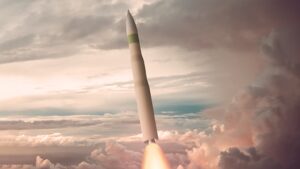
Among other things, Washington wants to put the "Sentinel" intercontinental missile system into service as a replacement for the "Minuteman III", the "Columbia" class ballistic missile submarine (SSBN) as a replacement for the "Ohio" class SSBN currently in service and the B-21 "Raider" as a replacement for the B-2A "Spirit" bomber.

In addition to the modernisation of the nuclear arsenal and the carriers, the programme also provides for changes to the nuclear command, control and communication facilities. The Nuclear Weapons Council, which is an official body made up of employees from the Ministry of Defence and the Ministry of Energy and monitors the country's nuclear programmes, is tasked with coordinating the programme.
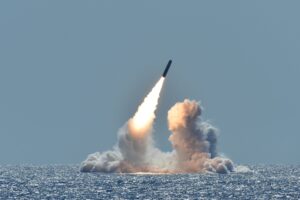
"Our nuclear arsenal is the basis and foundation of our defence, not only for ourselves, but also for our allies," Rosenblum said during the press conference. "And we must have a credible deterrent so that no adversary could at any time even entertain the idea that the use of a nuclear weapon against the United States or any of our allies could be in their interest." The Nuclear Posture Review 2022, as part of the National Defence Strategy published in October 2022, recently confirmed the triad of intercontinental ballistic missiles on land, air and sea. The strategic, i.e. nuclear-armed submarines, as the maritime component of the nuclear triad, are generally regarded as the most viable component in the triad of the United States' deterrence potential.
SSBN "Ohio" class (Ship Submersible Ballistic Nuclear)
Of the 41 former US strategic submarines, 31 Lafayette-class boats were quickly deactivated in their various states of armament and decommissioned at the end of the Cold War. At the same time, four of the eighteen "Ohio" class boats still under construction were "converted back" to SLBNs (Ship Submersible Guided Missile Nuclear) with an arsenal of up to 154 "Tomahawk" cruise missiles.
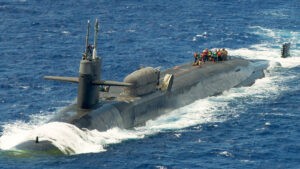
A planned decommissioning of a further four boats from the first construction batch after the turn of the millennium was revised when Russia took too long to ratify the START II arms control treaty on the reduction of nuclear weapons and was too hesitant to match the American intention to end the nuclear arms race.
Each of the remaining fourteen underwater units of the "Ohio" class - also known as "boomers" in the navy - can carry up to 24 Lockheed Martin Trident II D5 ballistic missiles on their patrols. Each missile is equipped with eight nuclear warheads with a yield of 475 kilotonnes, which can be independently assigned to their targets. The same missile is also used on the SSBNs of the British "Vanguard" class.

The boats, which are almost 171 metres long and displace 19,000 tonnes when submerged, are the largest in the USA. Due to the global range of their ballistic missiles, the Trident missiles can even be deployed from the protection of domestic waters. However, due to their low-noise construction and operation, the SSBNs can also bring their arsenal of weapons close to the generic coast. This leaves the enemy with very little reaction time - this strategic advantage is generally referred to as first strike capability. They are also very mobile and difficult to locate, making them almost impossible to disable by a first strike from the enemy - and therefore also capable of a second strike, in contrast to land-based strategic systems, whose coordinates have usually long since been reconnoitred. The combination of both capabilities has so far been able to prevent the absurd use of nuclear weapons due to the mandatory "mutual assured destruction" should one side wish to use these weapons.
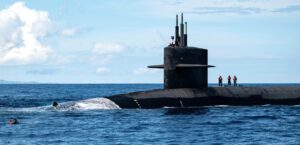
Each submarine has two crews of 155 soldiers, "Blue" and "Gold", who take it in turns to "man" the submarines on their extended missions. A patrol usually lasts two to three months, followed by three to four weeks in harbour for minor repairs and stocking up for the next mission. The eight boats of the Pacific Fleet are currently based at Naval Base Kitsap in the US state of Washington, while the six boats of the Atlantic Fleet are stationed at Naval Submarine Base Kings Bay in the state of Georgia.
As the life expectancy of the "Ohio" class is estimated at 45 years - in between the propulsion reactor has to be overhauled and refitted - the American SSBN fleet is due for renewal in the coming decade.
SSBN "Columbia" class
Twelve new "Columbia" class SSBNs are planned to replace the "Ohio" class, whose construction programme has been repeatedly assigned the highest priority since 2013. The procurement of the first unit was initiated in 2021 - the procurement of the second "Columbia" class boat is planned for 2024 in the US Navy's budget proposal. The procurement costs for the first and second boats are estimated at around 15 and 9 billion US dollars (14 and 8.6 billion euros) respectively. The fact that the procurement costs of the first boat are higher than those of the subsequent construction numbers is due to the fact that in the American system, most of the development and planning costs are allocated to the type boat. The US Navy is still assuming that construction number 1 will be able to set sail on its first patrol in 2031.
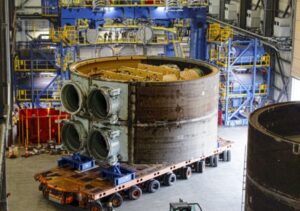
The "Columbias" are to be slightly wider with almost the same length and thus displace 21,000 tonnes when submerged. They will also only be equipped with 16 launch silos instead of 24. Their propulsion reactor should be able to run without interruption for the entire planned service life of 42 years. In addition, as many segments and components as possible from the third batch of the "Virginia" class attack submarines still being built will be used in the construction of the boats in order to reduce development and material costs. Nevertheless, the boats areote is now twice as expensive as calculated at the start of planning 20 years ago.
The type boat "USS District of Columbia" (SSBN-826) was laid down a year ago at the Electric Boat Corporation (General Dynamics) in Groton, Connecticut - in other words, the first hull segments were joined together, as is customary in today's construction methods. The final outfitting will then take place at Quonset Point in Rhode Island, less than 50 miles to the east.

SIPRI: Nuclear arsenals are growing worldwide
According to the SIPRI Annual Report (54th edition, Stockholm), the USA will have 3,708 nuclear warheads plus 1,536 decommissioned warheads awaiting dismantlement in 2023. Russia's nuclear arsenal comprises a total of 5,899 available and decommissioned nuclear warheads. Both countriescurrently hold 90 per cent of the world's nuclear weapons potential. The alarming result of the annual report is the increase more operational Nuclear weapons - not in the USA, but in five of the nine countries that have nuclear weapons.

